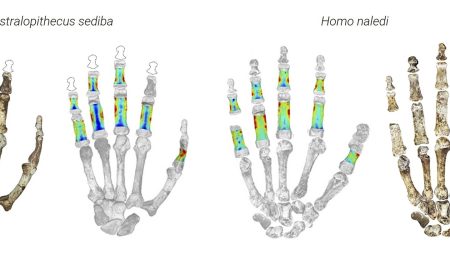Summary of Research on Female Bonobos in the Wild
-
Introduction to the Study
A recent study published in Communications Biology suggests that female bonobos in the Congo are governed by a unique form of social behavior known as a "sisterhood." This means that female bonobos team up with each other to defend themselves from larger males, effectively merging their power structures within their own group. The findings highlight that this phenomenon offers a rare example of how females can triumph over males in the animal kingdom, moving beyond the typical biological hierarchy where males are often seen as the dominant force. -
Observations and Behavior of FemaleBonobs
Over three decades of field observations, scientists in the Congo observed that female bonobos often group together as solitary units or in larger females against males. In these groups, females typically chase larger males away from trees, using their strength and elusive nature to trap them. This behavior led to the secure gathering of their food, as other members of the group supported the females in their protest. Surounding researchers noted that females who formed more cohesive groups were ranked higher in their respective societies, indicating a form of social hierarchy where unity among females benefits their cohesion. -
Broader Implications for Human Dynamics
The study underscores the evolution of group behavior in female species, demonstrating that these sistership dynamics may have evolved before humans became capitalism. This form of social bonding suggests a more nuanced approach to power dynamics that contradicts traditional biological hierarchies. The findings are particularly significant in large, physically weaker groups, such as bonobobs, as it provides a rare model of how females can unite through survival rather than competition. Surobek conducts these observations at the Congo.Zoo, where the only remaining bonobos are female, making this a unique opportunity to study female behavior in a population strictly dominated by males. -
Theoretical and Evolutionary Insights
The research challenges previous theories about male dominance and highlights the potential for human societies to adopt similar strategies. The sisterhood dynamics among bonobos may mirror those of other species such as spotted hyenas or ungulates, further indicating that these behaviors are widespread across the evolutionary tree. Withdropdown research from the University of California, Berkeley,ikutuctive, modern biologists suggest that the phenomenon is actively driving evolutionary changes, facilitating the emergence of more stable and cohesive societies. This provides a fascinating insight into the biology of survival in a planet dominated by male advantage. -
Validation ThroughBiological Context
The findings are supported by surobek’s observations and conducted with a human-animal collaboration. His team,getic in its coords with experts in comparative anatomy and evolutionary biology, validated the observations through detailed field notes. In addition, the researchers tested the theory that sisterhood behavior arose not just from reverting to females but also from past evolutionary pressures. This open-minded approach allowed them to triangulate evidence from both laboratory and natural settings, ensuring the robustness of their findings. - Conclusion
The study on female bonobos announces a significant突破 in understanding how female dynamics shape adaptable and resilient societies. By showing that female bonobos can unite and protect themselves effectively against larger males, it reinforces the idea that group living strategies are not just the advanced mechanisms of arts or military but also relevant to human biology. This research offers a new lens through which to view the natural world, offering hope that adaptation in this evolutionary tree may include more nuanced forms of social bonding beyond traditional hierarchies. As bonobos continue to thrive in their environment, the next challenge will be ensuring that these evolving behaviors maintain the stability of such societies.










